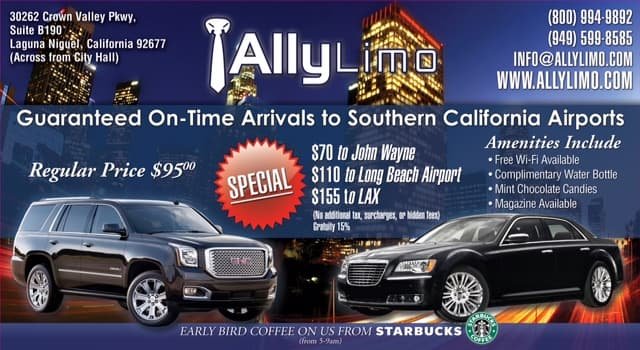Driving a limousine may seem like a glamorous job, but did you know that it can actually be quite challenging? The longer length and larger size of a limousine can make it more difficult to maneuver on the road, requiring drivers to have exceptional spatial awareness and driving skills. Additionally, the weight distribution and rear-wheel drive system can affect the handling of the vehicle, necessitating extra caution when turning or braking.
Driving a limousine comes with its own set of unique challenges. These grand vehicles have a rich history, originally used to transport famous personalities and dignitaries. However, the difficulty lies in the fact that limousines require specific training and licensing due to their size and complexity. In addition, dealing with demanding clients and managing the expectations of their needs can be a task itself. Nevertheless, with the right preparation and practice, individuals can learn to navigate these lavish vehicles and provide a safe, luxurious experience for passengers.
1. Familiarize Yourself: Get to know the controls and dimensions of the limousine.
2. Practice Safety: Always use mirrors, signal early, and maintain a safe following distance.
3. Be Mindful of Space: Pay attention to the extra length and width of the limousine when maneuvering.
4. Take It Slow: Drive at a moderate speed and avoid sudden movements.
5. Stay Confident: With practice, driving a limousine will become second nature. Enjoy the experience!

Is It Hard to Drive a Limousine?
Driving a limousine can be seen as a glamorous and exciting occupation, but many people may wonder if it is actually difficult to drive such a large and luxurious vehicle. In this article, we will explore the various aspects of driving a limousine and discuss the challenges and considerations that come with it. From handling the size of the vehicle to managing the demands of passengers, there are several factors that contribute to the level of difficulty in this profession. Let’s dive in and uncover the truth about driving a limousine.
The Size and Maneuverability
One of the most notable challenges of driving a limousine is the size of the vehicle. Limousines are typically longer and wider than standard cars, requiring a different level of spatial awareness and maneuvering skills. Maneuvering through tight spots, narrow streets, and parking lots can be quite challenging, especially for newer drivers or those who are not accustomed to handling large vehicles.
In addition to the size, the length of a limousine also affects its turning radius. Due to the elongated frame, making sharp turns or navigating through sharp corners can be tricky. Drivers need to have a good understanding of the dimensions of their limousine and be able to predict how it will behave in different driving scenarios to avoid any accidents or damage to the vehicle.
Furthermore, parking a limousine can be more complicated than parking a regular car. Finding appropriate parking spaces that can accommodate the length of the limousine can be a challenge, especially in congested urban areas. Drivers must possess excellent spatial awareness and parking skills to ensure the safety of the vehicle and the convenience of the passengers.
Passenger Handling and Etiquette
Driving a limousine is not just about operating the vehicle; it also involves providing a high level of customer service. Limousines are often associated with luxury and prestige, and as a driver, you are responsible for creating a comfortable and pleasant experience for your passengers.
This includes understanding and implementing proper passenger handling and etiquette. Limousine drivers must be skilled communicators, as they may be required to interact with individuals from various backgrounds and social statuses. Knowing how to appropriately engage with passengers, maintain a professional demeanor, and respect their privacy and confidentiality is crucial in this profession.
Additionally, drivers need to be prepared for the demands and expectations of passengers. This could involve attending to special requests, providing amenities within the vehicle, or accommodating specific preferences. Flexibility and adaptability are key qualities for a limousine driver to ensure customer satisfaction.
Hours and Schedule
Another aspect that may contribute to the perceived difficulty of driving a limousine is the nature of the job in terms of hours and scheduling. Limousine services often cater to events and occasions that occur outside of regular business hours, such as late-night parties, weddings, and corporate functions.
This means that drivers may be required to work irregular hours, including weekends and holidays. Long shifts and being on-call are also common in this profession. It requires a certain level of commitment and flexibility to adapt to these working conditions.
Furthermore, driving a limousine involves dealing with traffic congestion, unpredictable road conditions, and the potential for delays. Drivers must be able to handle the pressure and stress that can arise from these situations while maintaining professionalism and providing a smooth and enjoyable ride for their passengers.
Adhering to Regulations and Licensing
Driving a limousine also entails adhering to specific regulations and obtaining the necessary licensing and certifications. The requirements can vary depending on the jurisdiction or location, but generally, a special license, such as a commercial driver’s license (CDL), may be required.
These licenses usually involve additional training and assessments to ensure that drivers have the necessary skills and knowledge to operate large vehicles safely. Compliance with traffic laws, regulations governing the transportation of passengers, and maintaining proper records are also vital responsibilities of a limousine driver.
Additionally, depending on the type of limousine service, there may be specific rules and regulations regarding alcohol consumption and smoking within the vehicle. Upholding these guidelines and ensuring the safety and well-being of passengers is paramount.
Maintaining the Vehicle
As a limousine driver, you have the added responsibility of maintaining the vehicle in optimal condition. Regular inspections, routine maintenance, and cleanliness are essential to provide a safe and comfortable experience for passengers.
Ensuring that the limousine is mechanically sound, with properly functioning parts and systems, is crucial for smooth and hassle-free driving. Additionally, regular cleaning and upkeep of the interior and exterior of the vehicle is necessary to create a pristine and luxurious atmosphere for passengers.
Limousine drivers must also be prepared for unexpected situations, such as breakdowns or accidents, and be able to handle them professionally and efficiently. This includes having knowledge of basic troubleshooting techniques, knowing emergency procedures, and having access to reliable support and assistance.
Dealing with Unpredictable Scenarios
While driving any vehicle comes with its share of unpredictable scenarios, the nature of transporting passengers in a limousine can present unique challenges. For instance, dealing with intoxicated passengers, managing unexpected events or emergencies, or encountering unruly behavior may be part of a limousine driver’s experiences.
Being able to handle these situations calmly, assertively, and according to safety protocols is crucial for the well-being of both the passengers and the driver. Developing conflict resolution skills, basic first aid training, and situational awareness are important aspects of being prepared for any unexpected scenarios that may arise on the job.
Insurance Considerations
Obtaining the appropriate insurance coverage is an essential aspect of being a limousine driver. The nature of the job involves transporting passengers, and having proper insurance safeguards against potential liabilities and protects both the drivers and the company they work for.
Limousine drivers must ensure that they have adequate coverage that includes commercial auto insurance, liability insurance, and any additional coverage required by local regulations. Understanding the details of the insurance policy and complying with its terms and conditions is important for the protection of the driver, the vehicle, and the passengers.
The Rewards of Being a Limousine Driver
While driving a limousine may have its challenges, it also offers numerous rewards. The opportunity to work in a luxurious and glamorous environment, interact with interesting individuals, and be part of special events and occasions are some of the unique aspects of this profession.
Driving a limousine also provides the chance to explore different cities, discover new venues, and immerse oneself in various cultures and experiences. It can be a fulfilling and dynamic job that offers flexibility, independence, and the potential for financial stability.
Furthermore, mastering the art of driving a large and sophisticated vehicle like a limousine can boost a driver’s confidence and enhance their overall driving skills. The demanding nature of the job can sharpen one’s problem-solving abilities, patience, and adaptability, which are valuable traits in various aspects of life.
Conclusion:
Driving a limousine may have its difficulties, but with the right skills, attitude, and commitment, it can be a rewarding and enjoyable profession. From navigating the size and maneuverability of the vehicle to providing excellent customer service and maintaining the limousine, a successful limousine driver must possess a diverse range of skills and qualities.
While it’s not necessarily hard to drive a limousine, it requires a dedicated and responsible individual who can handle the demands of both the vehicle and the passengers. For those who are up for the challenge, driving a limousine can open up a world of exciting opportunities and experiences.
Key Takeaways
- Driving a limousine requires practice and experience.
- Limousines are longer and heavier than regular cars, so they require extra caution while driving.
- Handling a limousine’s size and weight can be challenging, especially in tight spaces.
- Limousines have different features and controls compared to regular cars, so drivers need to familiarize themselves with these.
- Driving a limousine can be rewarding and fun once you get used to it, but it may take some time to feel comfortable behind the wheel.
Frequently Asked Questions
Are you curious about what it takes to drive a limousine? Look no further! Below, we’ve answered some common questions to give you a better understanding of what it’s like behind the wheel of a luxurious stretch limo.
1. How long does it take to learn how to drive a limousine?
Learning to drive a limousine can vary depending on your previous driving experience and the specific requirements of the limo company you work for. Generally, it takes several weeks of training to become comfortable with handling a limousine, including practicing parking, turning, and navigating tight spaces. Some companies may also require you to obtain a commercial driver’s license (CDL) if the limousine exceeds a certain weight threshold. Overall, with dedication and consistent practice, you can become a skilled limousine driver in a matter of months.
Once you become familiar with the controls and mechanics of a limousine, mastering the art of driving it becomes a matter of practice and experience. Developing good judgment, spatial awareness, and professional driving etiquette will also contribute to your success as a limousine driver.
2. Are limousines difficult to maneuver?
Limousines are larger vehicles and can be more challenging to maneuver than regular cars. Their elongated bodies and extended wheelbases require extra care when making turns and parking in tight spaces. Additionally, due to their size, limousines have wider turning radii, so drivers must be mindful of their surroundings and anticipate the vehicle’s movements accordingly.
Despite the initial learning curve, with practice, patience, and honing your spatial awareness, maneuvering a limousine will become more natural. Many limousine drivers become adept at navigating through city streets, parking lots, and even narrow driveways, ensuring a smooth and comfortable ride for their passengers.
3. Do I need any special skills or qualifications to drive a limousine?
While there are no specific qualifications required to drive a limousine, there are certain skills and characteristics that can enhance your success in this profession. Firstly, a valid driver’s license is a must, and some states or limo companies may require you to obtain a CDL.
Additionally, excellent communication skills, customer service aptitude, and a professional demeanor are invaluable traits in the limousine industry. Being able to provide a pleasant and memorable experience for your passengers is just as important as your driving abilities.
4. What are the biggest challenges of driving a limousine?
Driving a limousine presents a unique set of challenges compared to regular passenger vehicles. One of the major challenges is maneuvering the vehicle in tight spaces, such as crowded city streets or cramped parking areas. The elongated body of a limousine requires drivers to pay extra attention to their surroundings, as well as have a good understanding of the vehicle’s dimensions.
Another challenge is maintaining passenger safety and comfort. Limousine drivers need to be attentive to their passengers’ needs, ensuring a smooth and enjoyable ride for everyone on board. This may involve adapting your driving style to provide a luxurious experience while adhering to traffic rules and regulations.
5. Are there any specific regulations or rules for limousine drivers?
As a limousine driver, you are subject to the same traffic laws and regulations as any other driver on the road. However, there may be additional rules and regulations depending on your location and the limousine company you work for. Some common regulations may include adhering to passenger capacity limits, maintaining the cleanliness and upkeep of the vehicle, and following specific safety protocols.
It is crucial to familiarize yourself with local transportation laws and any specific regulations imposed by your employer to ensure not only your passengers’ safety but also to maintain your professional integrity as a limousine driver.






